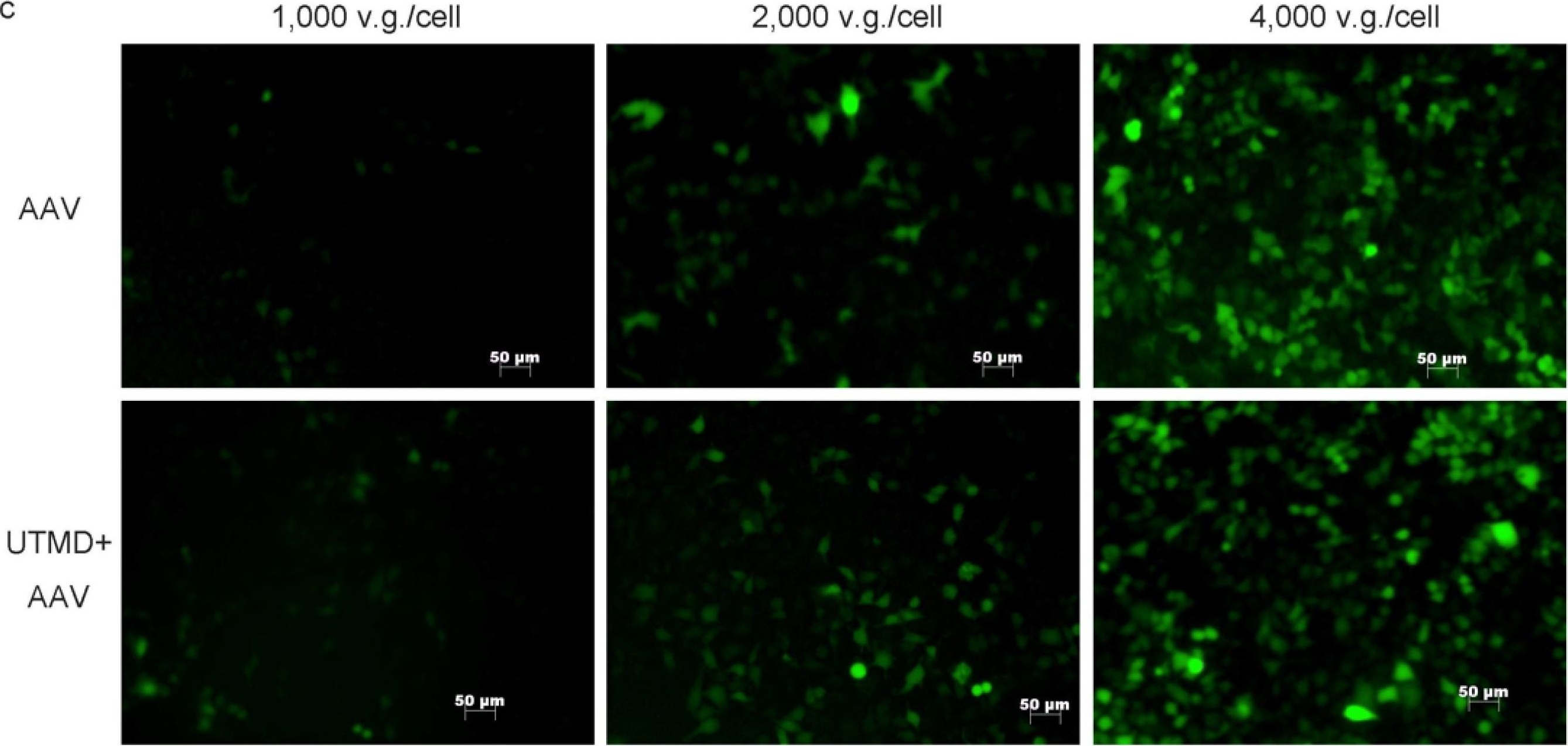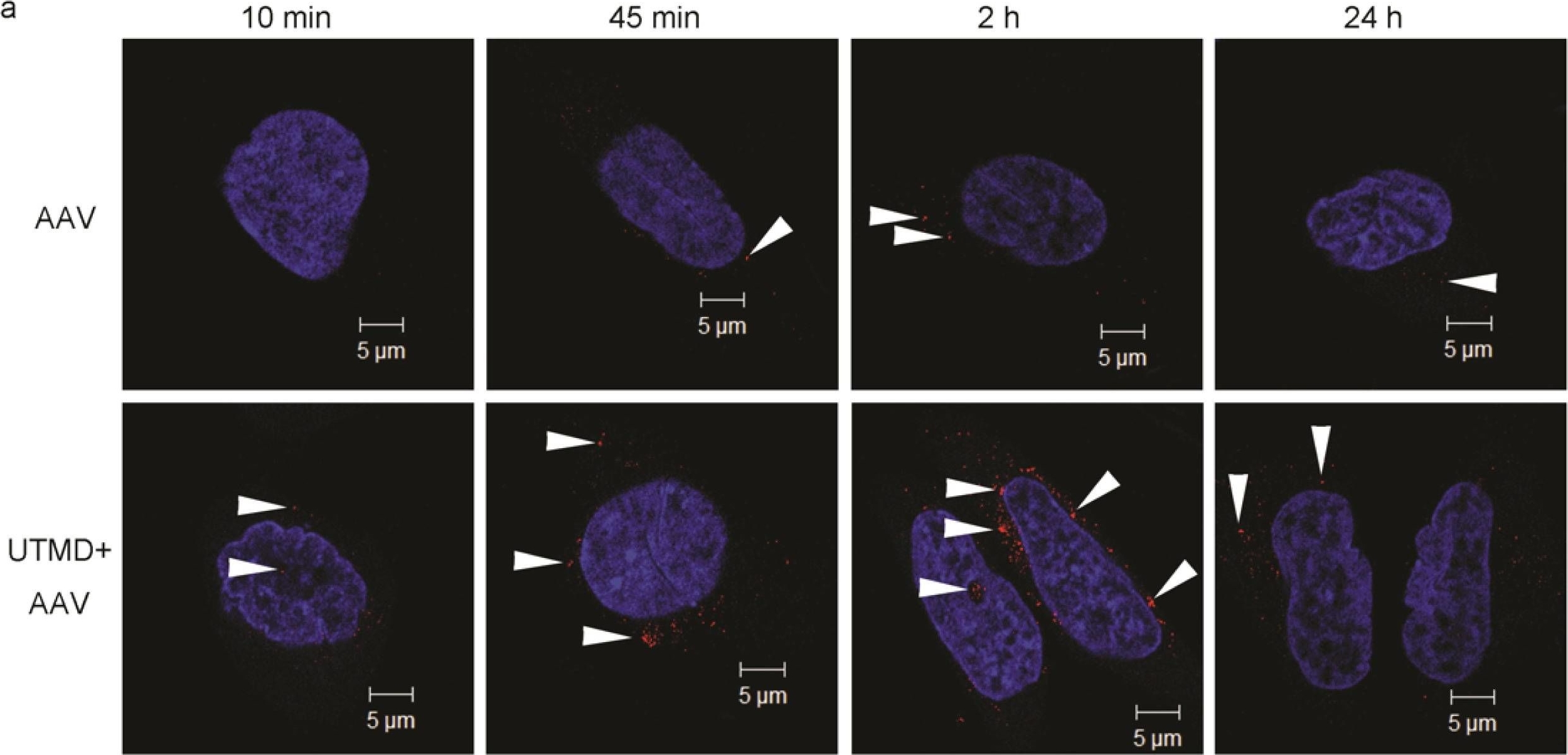anti-AAV2 (intact particle) mouse monoclonal, A20
- Purified, lyophilized
- Mouse monoclonal
- Suitable for dot blot, ELISA, ICC and neutralization assay
- Reacts with AAV2, AAV2 7m8 and AAV3 intact particles
- Isotype: IgG3
Product description
| Quantity | 50 µg |
|---|---|
| Antibody Type | Monoclonal |
| Host | Mouse |
| Isotype | IgG3 |
| Conjugate | Unconjugated |
| Application | Affinity chromatography, Dot blot, ELISA, ICC/IF, IP, Neutralization assay |
| Purification | Affinity chromatography |
| Reactivity | AAV2, AAV2 7m8, AAV3 |
| No reactivity | AAV1, AAV4, AAV5, AAV6, AAV7, AAV8, AAV9, AAV11, AAV12, AAVDJ, AAVrh10, AAVrh74 |
| Storage before reconstitution | 2-8°C until indicated expiry date |
| Storage after reconstitution | 2-8°C |
| Intended use | Research use only |
| Clone | A20 |
| Immunogen | AAV2 capsids |
| Concentration | 50 µg/ml after reconstitution with 1 ml dist. water |
| Formulation | Lyophilized; reconstitute in 1 ml dist. water (final solution contains 0.09% sodium azide, 0.5% BSA in PBS buffer, pH 7.4) |
| Binding affinity | KD value (AAV2) = 2.6E-11 M KD value (AAV3) = <1.0E-12 M |
| Synonym | Adeno-associated virus 2; AAV-2 |
Applications
| Tested applications | Tested dilutions |
|---|---|
| Immunocytochemistry (ICC)/ Immunofluorescence (IF) | 1:20 |
| Affinity Chromatography | Assay dependent |
| Dot Blot | 1:500 (0.1 µg/ml; non-denaturing conditions) |
| ELISA | Assay dependent |
| Immunoprecipitation (IP) | 1:5 |
| Neutralization Assay | EC50 ~5 ng/ml (AAV2) and ~3 ng/ml (AAV3) - assay dependent |
Background
For characterization of different stages of infection and very useful for the analysis of the AAV2 assembly process. A20 specifically reacts with AAV2 and AAV3, empty and full capsids. Recognizes a conformational epitope of assembled capsids, not present in denatured capsid proteins and native but unassembled capsid proteins. The antibody cannot be used for immunoblotting.
Epitope mapping experiments (Wobus et al. 2000) identified four immunoreactive (discontinous) regions. The major reaction was attributed to sequence aa 369 to aa378 of AAV2 capsids. The antibody is also useful for neutralizing experiments.
Wobus, C. E. et al. Monoclonal antibodies against the adeno-associated virus type 2 (AAV-2) capsid: epitope mapping and identification of capsid domains involved in AAV-2-cell interaction and neutralization of AAV-2 infection. J. Virol. 74, 9281-93 (2000).
Moskalenko, M. et al. Epitope Mapping of Human Anti-Adeno-Associated Virus Type 2 Neutralizing Antibodies: Implications for Gene Therapy and Virus Structure. Jounal Virol. 74, 1761-1766 (2000).
Limited Use Label License: Research Use Only
Product is exclusively licensed to PROGEN Biotechnik GmbH. The use of these products for the development, manufacturing and sale of secondary products/derivatives which are based on the purchased products and/or which include the purchased product require a royalty based sub-license agreement.
References/Publications (21)
Downloads
Q & A's
Customer Reviews
Login
FAQs
The concentration of purified antibodies is mentioned on the datasheet.
For prediluted antibodies the concentration may vary from lot to lot. The concentration of these antibodies is not mentioned on the datasheet and can be requested at support@progen.com.
The supernatant format contains FCS proteins from cell culture medium supplemented with FCS.
The serum antibodies contain other proteins present in serum.
- Supernatant and supernatant concentrate: This format contains hybridoma cell culture supernatant. The antibody is not purified and the antibody concentration is not determined. The antibody concentration may vary from lot to lot. Therefore we recommend to titrate the optimal concentration for the application used for each new lot.
- Lyophilized, purified: This format contains purified antibody in lyophilized form. The reconstitution of this antibody is described in the datasheet. The buffer composition after reconstitution is also mentioned on the datasheet.
- Liquid, purified: This format contains purified antibody in liquid format. The concentration is mentioned on the datasheet.
- Prediluted, purified: This format contains purified antibody in liquid format. Most antibodies in this format are diluted to be ready-to-use for IHC with standard tissue. But some antibodies of this format need further dilution for IHC. This is mentioned on the datasheet.
Most of our liquid antibodies and reconstituted lyophilized antibodies may be stored for short term storage (up to 3 month) at 2-8°C. For long term storage we recommend to store the antibody at -20°C in aliquots. Please avoid freeze and thaw cycles.
Most of our conjugated antibodies should be stored at 2-8°C.
The individual storage conditions are mentioned on the datasheet.
There is no difference in performance.
Anti-Adeno-Associated Virus Capsid Proteins Antibodies

Anti-Adeno-Associated Virus Particle Antibodies
For more information on the antibody binding epitopes on assembled AAV1, 2, 5, 8 and 9 capsids, see the tables below summarizing the published data from the following publications on the specific antibody binding sites:
-
AAV 1
- Tseng, Y.-S. et al. Adeno-Associated Virus Serotype 1 (AAV1)-and AAV5-Antibody Complex Structures Reveal Evolutionary Commonalities in Parvovirus Antigenic Reactivity. J. Virol. 89, 1794–1808 (2015).
- McCraw et al. Structureof adeno-associated virus-2 in complex with neutralizing monoclonal antibody A20. Virology (2012) 431:40-9.
- Wobus, C. E. et al. Monoclonal antibodies against the adeno-associated virus type 2 (AAV-2) capsid: epitope mapping and identification of capsid domains involved in AAV-2-cell interaction and neutralization of AAV-2 infection. J. Virol. 74, 9281–93 (2000).
- Huttner et al. Genetic modifications of the adeno-associated virus type 2 capsid reduce the affinity and the neutralizing effects of human serum antibodies. Gene Ther (2003) 10:2139-47.
- Lochrie et al. Mutations on the external surfaces of adeno-associated virus type 2 capsids that affect transduction and neutralization. J Virol (2006) 80:821-34.
- Tseng, Y.-S. et al. Adeno-Associated Virus Serotype 1 (AAV1)-and AAV5-Antibody Complex Structures Reveal Evolutionary Commonalities in Parvovirus Antigenic Reactivity. J. Virol. 89, 1794–1808 (2015).
- Gurda, B. L. et al. Mapping a Neutralizing Epitope onto the Capsid of Adeno-Associated Virus Serotype 8. J. Virol. 86, 7739–7751 (2012).
EM structures of assembled AAV1, 2, 4, 5, 6, and 8 capsids with Fab-fragments are available in the following publications:
- Emmanuel, S. N. et al. Parvovirus Capsid-Antibody Complex Structures Reveal Conservation of Antigenic Epitopes Across the Family. Viral Immunolgoy. 34(1) (2021).
- McCraw, S. M. et al. Structure of adeno-associated virus-2 in complex with neutralizing monoclonal antibody A20. Virology. 432(1-2):40-9 (2012).
- Tseng, Y. et al. Adeno-Associated Virus Serotype 1 (AAV1)- and AAV5-Antibody Complex Structures Reveal Evolutionary Commonalities in Parvovirus Antigenic Reactivity. J Virol. 89(3):1794-1808 (2015).
- Jose, A. et al. High-Resolution Structural Characterization of a New Adeno-associated Virus Serotype 5 Antibody Epitope toward Engineering Antibody-Resistant Recombinant Gene Delivery Vectors. J Virol. 93(1):e01394-18 (2019).
- Silveria, M. A. et al. The Structure of an AAV5-AAVR Complex at 2.5 Å Resolution: Implications for Cellular Entry and Immune Neutralization of AAV Gene Therapy Vectors. Viruses. 12(11):1326 (2020).
































